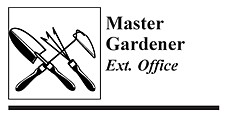November 11, 2010 at 9:28 a.m.
In the article it states that there are four critical questions before making a final decision. The first is, is the tree healthy? Gardeners tend to be incredibly hopeful and will try almost anything to keep a plant alive. Health is a measure of a tree's ability to store energy for growth, and tolerance to stress and release of that energy. If the tree has good leaf color and size and sufficient crown ratio it's generally considered to be healthy. If you look up through the foliage of a Norway maple you shouldn't be able to see a lot of sky. If it's a honey locust, you should see blue sky clearly through the crown. These are examples of crown density.
The second question is, will the tree remain stable? Decay is the most common reason trees fail in windstorms. If the decay is extensive and especially if there is a cavity the tree should be removed. Damaged roots are reason why trees go down. Roots that have been damaged by construction or where the roots grew around the tree trunk, also weaken the tree.
The third question to ask when deciding to remove a tree is, what is the relative value? As long as the tree is healthy this is more of an emotional decision. Trees with emotional memories are an unusual species are extra large, offer great shade, unique design, etc., may mean something to the owner.
What's your budget is the final question. Tree care doesn't come cheap, especially if it's a large tree and the care is long term. It is true that trees increase property value, but if part of your grocery money is used to keep a tree in your yard, it may not be possible to keep it healthy. Also, the cost keeping Dutch elm disease, oak wilt, and emerald ash borer away, may be prohibitive.
If some of these decisions could be in your future, you may begin doing some research on alternative replacements.





Comments:
Commenting has been disabled for this item.